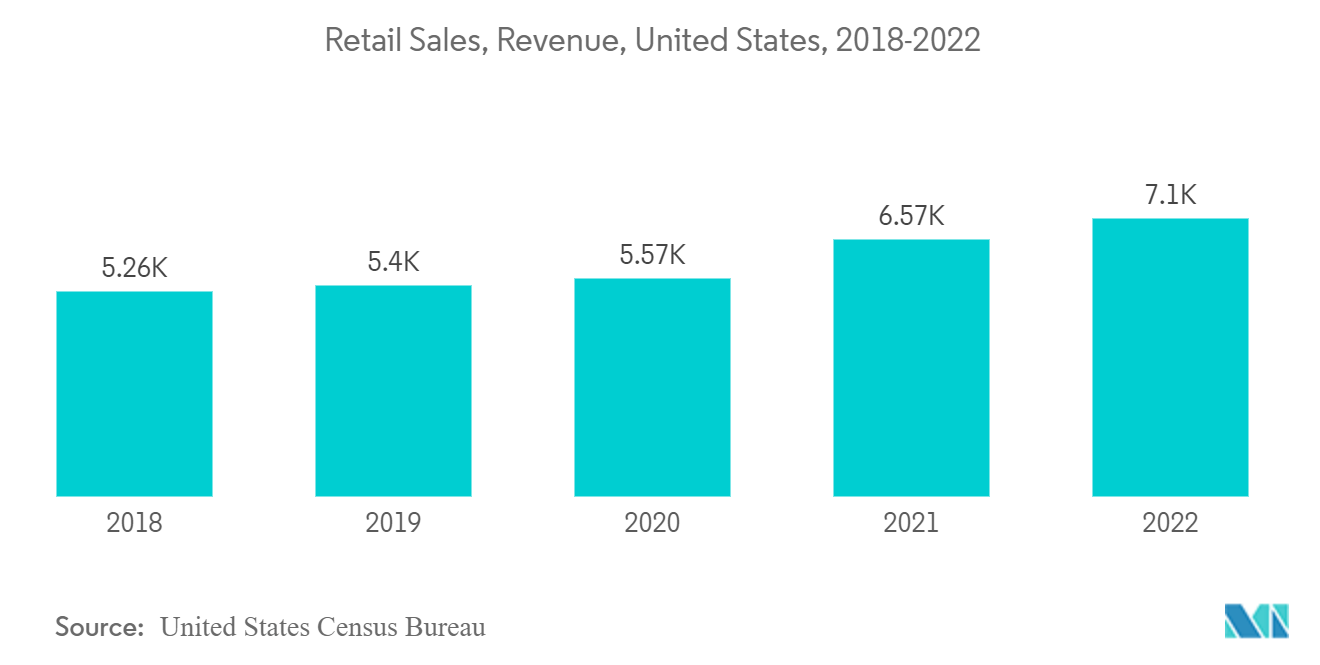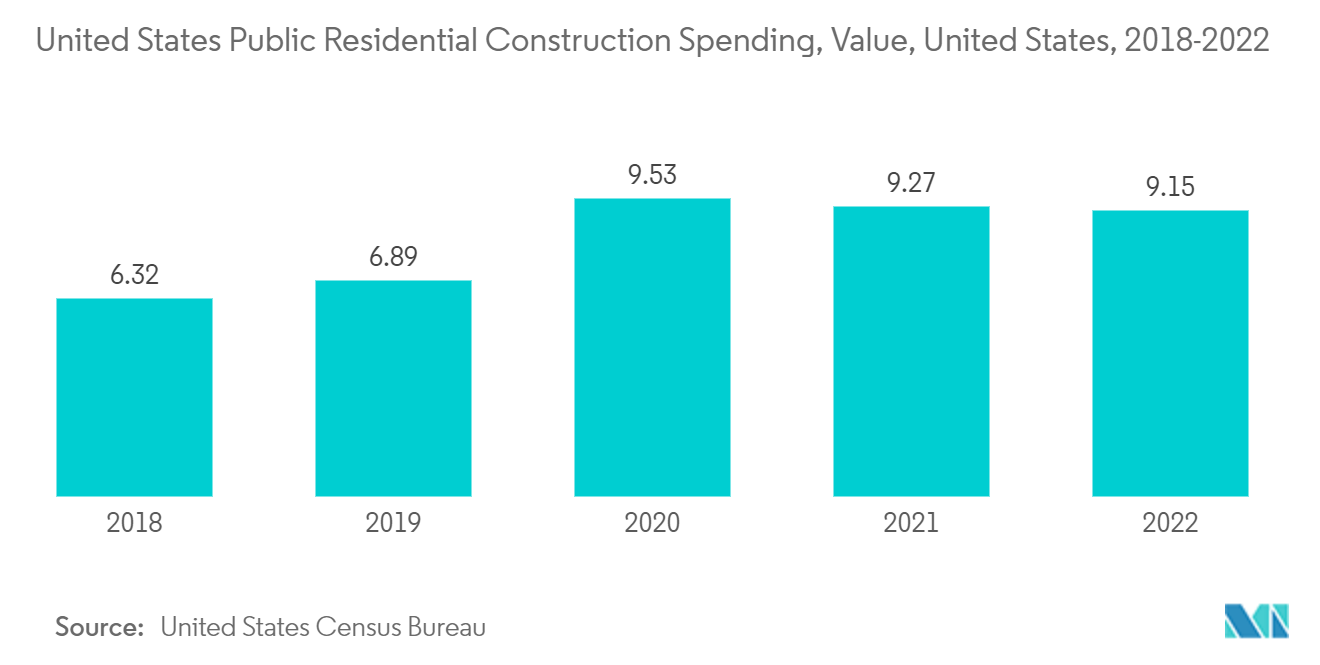Market Trends of US Expandable Polystyrene (EPS) Industry
Grey and Silver EPS Segment to Drive the Market Growth
- Manufacturers have created a highly competitive market for EPS by modifying the regular grade EPS. The addition of flame retardants, graphite, and other additives has introduced the segment of 'modified' EPS.
- White EPS is widely used in packaging fragile products as it exhibits shock absorption properties.
- The rising population, increased spending power, rapid urbanization, and retail sector development in regions, including Asia, Eastern Europe, and the Middle East, are factors augmenting the growth of the packaging industry.
- Flexible packaging plays a pivotal role in reducing beverage and product waste and allows online brands to reinvigorate their packaging to enhance the e-commerce experience.
- Amazon's packaging transition is a boost for the US flexible plastics industry. The company currently controls just over 49% of the US e-commerce market. Flexible materials are extensively used in the food and soft drinks industries in the United States, where many consumers actively seek quick and easy solutions that align with their time constraints.
- The above-mentioned factors are likely to affect the demand for gray and silver EPS during the forecast period.

Building and Construction Segment to Dominate the Market
- The United States is the world's largest and most powerful economy. The United States is a major industrialized nation that houses multiple industries in heavy-scale, medium-scale, and small-scale categories. The country is known for its booming commercial activities.
- Grey EPS is one such innovation wherein the addition of graphite has increased its refractive and reflective properties to provide better thermal insulation. The graphite works on a very small scale to increase the refraction of IR light and make the path for the escaping heat less direct. It has a unique color (gray to black), good mechanical properties, high water resistance, and increased fire resistance. This allows for the use of the same equipment used to process conventional EPS.
- Due to its unique properties, it allows for a reduction in thermal conductivity by 20% and, thus, reduces the board thickness by 20% while still maintaining the same properties. It is used for insulating external walls, roof systems, foundations, floors, thermo-acoustic insulation, manufacturing insulated and left-in-place formwork, and lightweight building blocks.
- The use of EPS significantly improves both old and new buildings' insulation and helps meet the criteria for reducing power costs. It has the same density as white EPS; however, it isolates 20% better.
- This has made it particularly attractive in the United States, where people are becoming more inclined toward housing renovation and lower maintenance costs.
- The United States boasts a colossal construction sector that employs over 7.6 million employees. According to U.S. Census Bureau, in 2022, the value of construction was USD 1,792.9 billion, a 10.2 % (0.8 %) increase over the USD 1,626.4 billion spent in 2021.
- Further, as per further statistics generated by the US Census Bureau, the annual value for new construction put in place in the United States accounted for USD 1,657.59 billion in 2022, compared to USD 1,499.82 billion in 2021. Moreover, the annual value of residential construction put in place in the United States was valued at USD 849,164 million in 2022, compared to USD 740,645 million in 2021. The annual value of non-residential construction put in place in the country was valued at USD 808,427 million in 2022, compared to USD 759,177 million in 2021, thereby decreasing the consumption of the market studied in the short term.
- Thus, such trends in the construction sector are likely to influence the demand for EPS in the country during the forecast period.


